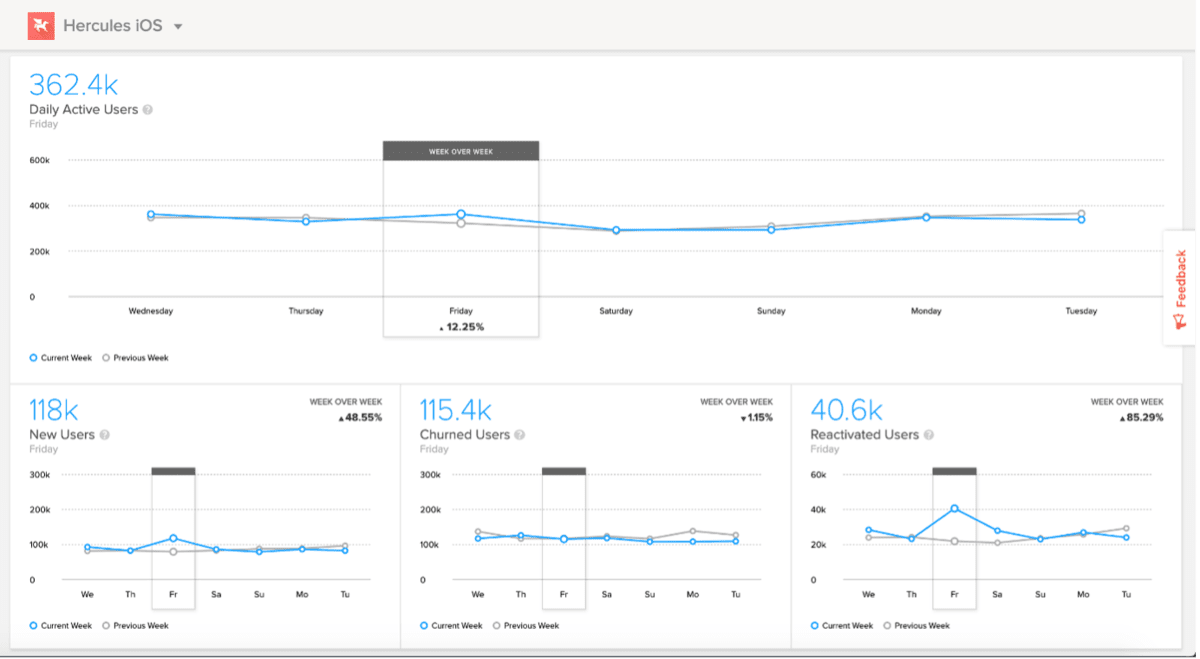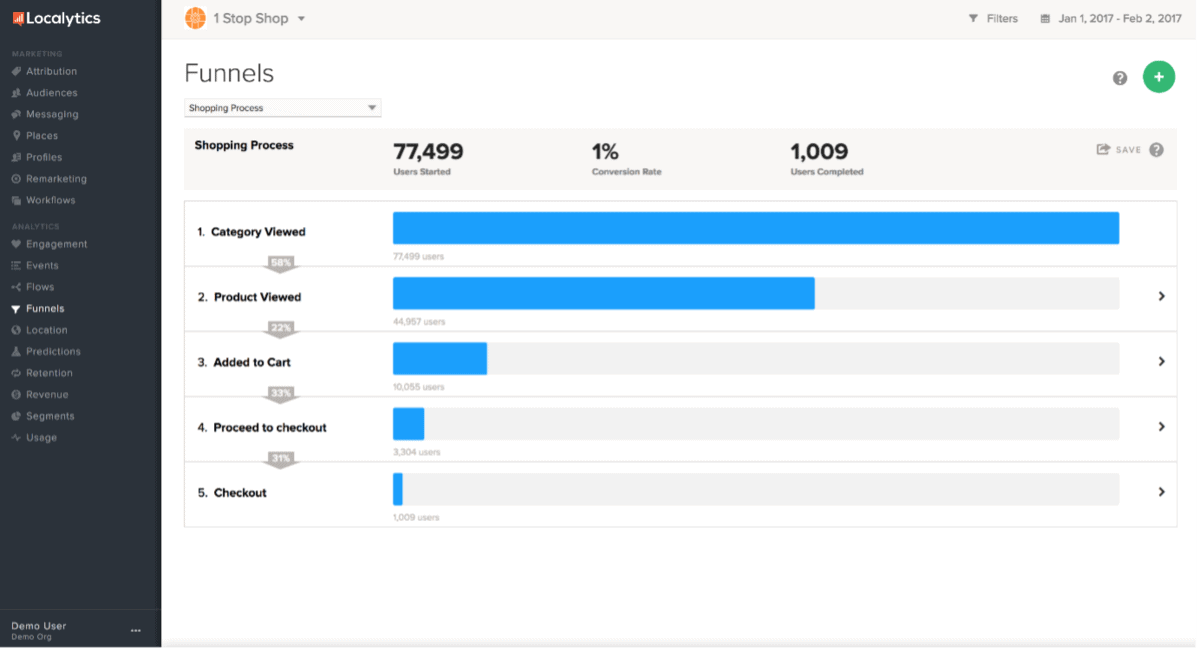The mobile app market is becoming increasingly crowded, with more businesses than ever chasing success via app stores. Android users now have 2.87 million apps to choose from on the Play Store, while Apple users can select from a choice of 1.96 million apps. Gaining the attention of your target audience has become more competitive than ever, meaning that when you secure a conversion, i.e., a download, you must deliver an experience that makes your user want to continue using your app.
App analytics are key to enabling marketers to deliver great mobile experiences and can make or break your app’s success. If your user dislikes any aspect of your app or receives a poor user experience (UX), they’ll be able to find a replacement in a matter of seconds.
To help set your app up for success, let’s take a look at some of the key metrics you should focus on and how you can use mobile app analytics to improve the customer journey.

Identifying key metrics
As a mobile app marketer, your focus should be on building relationships with your users and ensuring they get what they want from your app. Furthermore, it’s important to ensure that your app provides added value to the end user, over and above other channels, to grow and retain your audience. To measure your success, here are five key metrics you should focus on:
- App engagement – app engagement will help you measure how engaged your users are with your apps, including how many users you have, how often a user interacts with your app, and how frequently a user abandons your app. Monitoring and optimizing your app’s engagement rate will set you up for long-term success.
- User retention – retaining new users is far easier than acquiring new ones, so tracking user retention is a must. If your retention rate is high, then it shows you’re doing something right and meeting your user’s expectations. However, if it’s low, it’s time to go back to the drawing board and adjust your strategy. The average user retention rate will vary according to industry, but in short, the higher the retention rate, the higher your chances of success.
- Conversions – tracking the number of conversions delivered through your app will help you track its success. For example, if you work in the travel industry, this will be measured on the number of bookings made through your app. If you’re seeing a high number of bookings via your app, you can be confident the customer journey is seamless.
- Uninstalls – when it comes to uninstalls, the lower the better. Once a user has downloaded your app, you want to make them stick, so if your uninstall rate is rising, analyze the customer journey to see what’s causing it.
Personalize the customer journey
Users now expect personalized journeys and are more likely to engage with brands that deliver this. Upland BlueVenn’s Digital Divide research revealed that 33% of US customers said that a more personalized experience on a mobile app would encourage them to use it over a brand’s website. Furthermore, statistics from our 2020 research into personalization revealed that 32% of customers expect brands to personalize their experience based on known interests and preferences. This drops to 24% and 21% respectively for ‘addressed to their name’ and ‘based on their physical location’, however still demonstrates high expectations for personalized marketing.
To deliver personalized experiences, you need to leverage the vast amount of customer data you’ve collected. After all, it’s difficult to give your customers what they want if you don’t know who they are or what they want in the first place.
There are numerous ways you can utilize your app analytics to achieve this. For retailers, this could be monitoring any repeat purchases made by a customer and sending them a reminder via push notification at the time they usually repurchase, minimizing the effort they need to take to complete the action. Or, if a customer has added a product to their cart but not completed the transaction, you can use app analytics to identify where in the journey they dropped off and adapt your strategy accordingly. For example, if they follow all the steps but drop off at the payment page, why not send them an in-app message offering a discount code to incentivize them to complete their purchase.

Uncover and react to problems
App analytics will help you answer important questions such as how many users do you have? How often do your users open the app? How long do they use it for? Is everything working as it’s supposed to? These questions highlight a key element of the customer journey, the user experience.
Nothing will interfere with the customer journey more than a broken link or clunky functionality and if a user hits a problem, that could be enough to cause them to churn. When asked, over half of US consumers said that a better UX on a mobile app would encourage them to use it over a web browser, reflecting the important role your app’s UX plays in user retention.
With app analytics, you can identify potential problems and react to them, sometimes before they arise, making them a crucial part of the app development process.
If you can see that everything flows smoothly up until the registration page but then users drop off, you know that you need to revisit this particular aspect of your app and improve the UX. It might be that this happens at several stages along the journey, in which case you can revisit the app development and adapt accordingly. No app is perfect, and even the most popular and successful apps will run into problems. That’s why continuous development and improvements are key to app success, therefore, monitoring and analyzing how users use your app is vital.
How Upland Localytics can help
Upland Localytics is a leading mobile app analytics and marketing software, offering strong analytics capabilities. Our software gives our customers the insights they need to deliver seamless app experiences that delight at each stage of the customer journey.
Our detailed analytics features mean our customers can paint a clearer picture of their customers through rich data and actionable analytics, allowing them to deliver the experiences to match their wants and needs.
As well as personalizing the customer experience, these analytics unlock key insights such as how many people download and use an app, what causes churn, and how to improve retention and adoption.
To see how your mobile app can benefit from Upland Localytics, register for our upcoming monthly demo to see our software for yourself.
